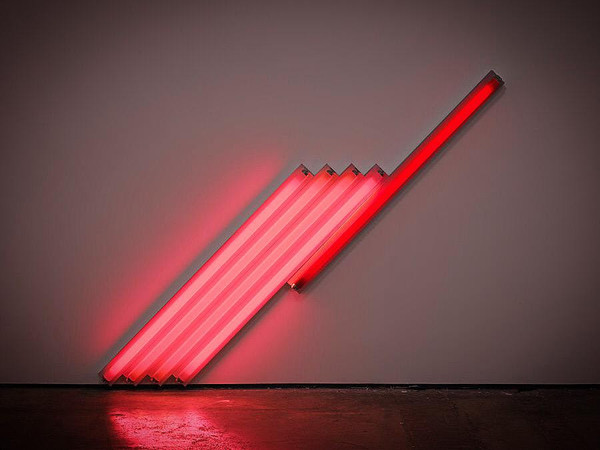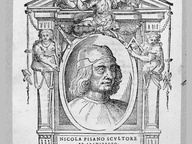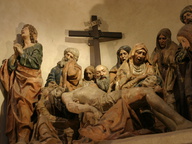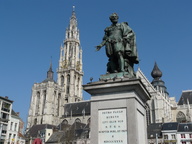Dan Flavin

© David Zwirner & Cardi Gallery | © 2018 Estate of Dan Flavin / Artists Rights Society (ARS), New York
From 19 Febbraio 2019 to 28 Giugno 2019
Milan
Place: Cardi Gallery Milan
Address: corso di Porta Nuova 38
Times: Monday through Friday, 10 am – 7pm. Saturday by appointment
Telefono per informazioni: +39 02.45478189
E-Mail info: mail@cardigallery.com
Official site: http://www.cardigallery.com
Cardi Gallery Milan is delighted to present a solo exhibition of the legendary American Minimalist Dan Flavin. The exhibition is organized in collaboration with the Estate of Dan Flavin and is accompanied by a fully illustrated catalogue that includes an essay by the esteemed Italian art critic Germano Celant.
The American artist Dan Flavin (1933–1996) is internationally renowned for his installations and sculptural works made exclusively of commercially available fluorescent light. The exhibition at Cardi Gallery Milan will feature fourteen light works from the late 1960s through the 1990s that show the evolution over four decades of the artist’s investigations into notions of colour, light and sculptural space.
In the summer of 1961, while working as a guard at the American Museum of Natural History in New York, Flavin started to make sketches for sculptures that incorporated electric lights. Later that year, he translated his sketches into assemblages he called “icons,” which juxtaposed lights onto monochromatic, painted Masonite constructions. By 1963, he removed the rectangular support altogether and began to work with his signature fluorescent lamps. In 1968, Flavin expanded his sculptures into room-size environments and filled an entire gallery with ultraviolet light at Documenta 4 in Kassel (1968).
Flavin always emphatically denied that his sculptural light installations had any kind of transcendent, symbolic, or sublime dimension, stating: "It is what it is and it ain't nothing else." He claimed his works were simply fluorescent light responding to a specific architectural setting. By using light as his medium, Flavin was able to redefine how we perceive pictorial and sculptural space.
Daniel Flavin was born in Jamaica, New York, in 1933. He studied for the priesthood for a brief period of time before enlisting in the United States Air Force. During military service in 1954–55, Flavin studied art through the University of Maryland Extension Program in Korea. Upon his return to New York in 1956, he briefly attended the Hans Hofmann School of Fine Arts and studied art history at the New School for Social Research. In 1959, he took drawing and painting classes at Columbia University; that year, he began to make assemblages and collages in addition to paintings that pointed to his early interest in Abstract Expressionism. In 1961, he presented his first solo show of collages and watercolours at the Judson Gallery in New York. After this show the artist starts to produce what will become a singularly consistent and prodigious body of work that utilized exclusively commercially available fluorescent lamps to create installations of light and colour that employed systematic compositions.
Major retrospectives of Flavin’s work have been organized by the National Gallery of Canada in Ottawa (1969), St. Louis Art Museum (1973), Kunsthalle Basel (1975), and Museum of Contemporary Art in Los Angeles (1989). He also executed many commissions for public work, including the lighting of several tracks at Grand Central Station in New York in 1976. Flavin died on November 29, 1996, in Riverhead, New York. Both the Deutsche Guggenheim in Berlin in 1999 and the Dia Foundation for the Arts in 2004 mounted major posthumous retrospectives of the artist’s work. In 1996, following an invitation from Italian priest Giulio
Greco, Dan Flavin created a site-specific instillation as the central element for the restoration and renewal of the Santa Maria
Annunciata in Chiesa Rossa church in Milan, designed by Giovanni Muzio in the 1930s.
Opening: Tuesday, 19 February, 6 – 9 pm
The American artist Dan Flavin (1933–1996) is internationally renowned for his installations and sculptural works made exclusively of commercially available fluorescent light. The exhibition at Cardi Gallery Milan will feature fourteen light works from the late 1960s through the 1990s that show the evolution over four decades of the artist’s investigations into notions of colour, light and sculptural space.
In the summer of 1961, while working as a guard at the American Museum of Natural History in New York, Flavin started to make sketches for sculptures that incorporated electric lights. Later that year, he translated his sketches into assemblages he called “icons,” which juxtaposed lights onto monochromatic, painted Masonite constructions. By 1963, he removed the rectangular support altogether and began to work with his signature fluorescent lamps. In 1968, Flavin expanded his sculptures into room-size environments and filled an entire gallery with ultraviolet light at Documenta 4 in Kassel (1968).
Flavin always emphatically denied that his sculptural light installations had any kind of transcendent, symbolic, or sublime dimension, stating: "It is what it is and it ain't nothing else." He claimed his works were simply fluorescent light responding to a specific architectural setting. By using light as his medium, Flavin was able to redefine how we perceive pictorial and sculptural space.
Daniel Flavin was born in Jamaica, New York, in 1933. He studied for the priesthood for a brief period of time before enlisting in the United States Air Force. During military service in 1954–55, Flavin studied art through the University of Maryland Extension Program in Korea. Upon his return to New York in 1956, he briefly attended the Hans Hofmann School of Fine Arts and studied art history at the New School for Social Research. In 1959, he took drawing and painting classes at Columbia University; that year, he began to make assemblages and collages in addition to paintings that pointed to his early interest in Abstract Expressionism. In 1961, he presented his first solo show of collages and watercolours at the Judson Gallery in New York. After this show the artist starts to produce what will become a singularly consistent and prodigious body of work that utilized exclusively commercially available fluorescent lamps to create installations of light and colour that employed systematic compositions.
Major retrospectives of Flavin’s work have been organized by the National Gallery of Canada in Ottawa (1969), St. Louis Art Museum (1973), Kunsthalle Basel (1975), and Museum of Contemporary Art in Los Angeles (1989). He also executed many commissions for public work, including the lighting of several tracks at Grand Central Station in New York in 1976. Flavin died on November 29, 1996, in Riverhead, New York. Both the Deutsche Guggenheim in Berlin in 1999 and the Dia Foundation for the Arts in 2004 mounted major posthumous retrospectives of the artist’s work. In 1996, following an invitation from Italian priest Giulio
Greco, Dan Flavin created a site-specific instillation as the central element for the restoration and renewal of the Santa Maria
Annunciata in Chiesa Rossa church in Milan, designed by Giovanni Muzio in the 1930s.
Opening: Tuesday, 19 February, 6 – 9 pm
SCARICA IL COMUNICATO IN PDF
COMMENTI

-
 Dal 31 gennaio 2024 al 04 maggio 2025
Fermo | Palazzo dei Priori
Dal 31 gennaio 2024 al 04 maggio 2025
Fermo | Palazzo dei Priori
-
 Dal 20 dicembre 2024 al 04 maggio 2025
Fermo | Palazzo dei Priori
Dal 20 dicembre 2024 al 04 maggio 2025
Fermo | Palazzo dei Priori
-
 Dal 20 dicembre 2024 al 04 maggio 2024
Gorizia | Palazzo Attems Petzenstein
Dal 20 dicembre 2024 al 04 maggio 2024
Gorizia | Palazzo Attems Petzenstein
-
 Dal 18 dicembre 2024 al 18 dicembre 2024
Venezia | Museo Correr
Dal 18 dicembre 2024 al 18 dicembre 2024
Venezia | Museo Correr
-
 Dal 14 dicembre 2024 al 02 marzo 2025
Palermo | Palazzo Abatellis
Dal 14 dicembre 2024 al 02 marzo 2025
Palermo | Palazzo Abatellis
-
 Dal 12 dicembre 2024 al 23 febbraio 2025
Roma | Palazzo Altemps
Dal 12 dicembre 2024 al 23 febbraio 2025
Roma | Palazzo Altemps


